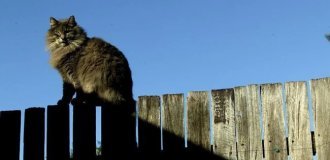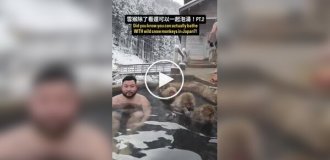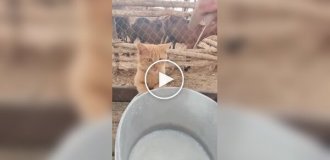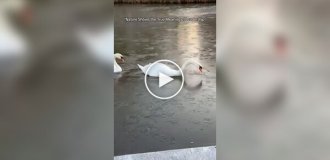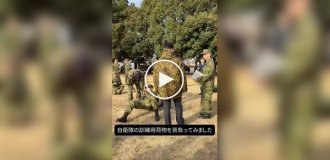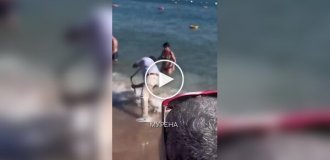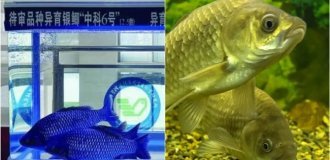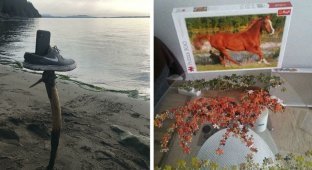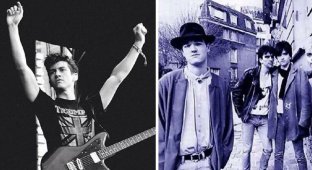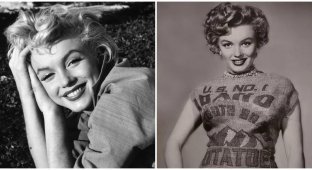A unique species of turtles, which has a few representatives. 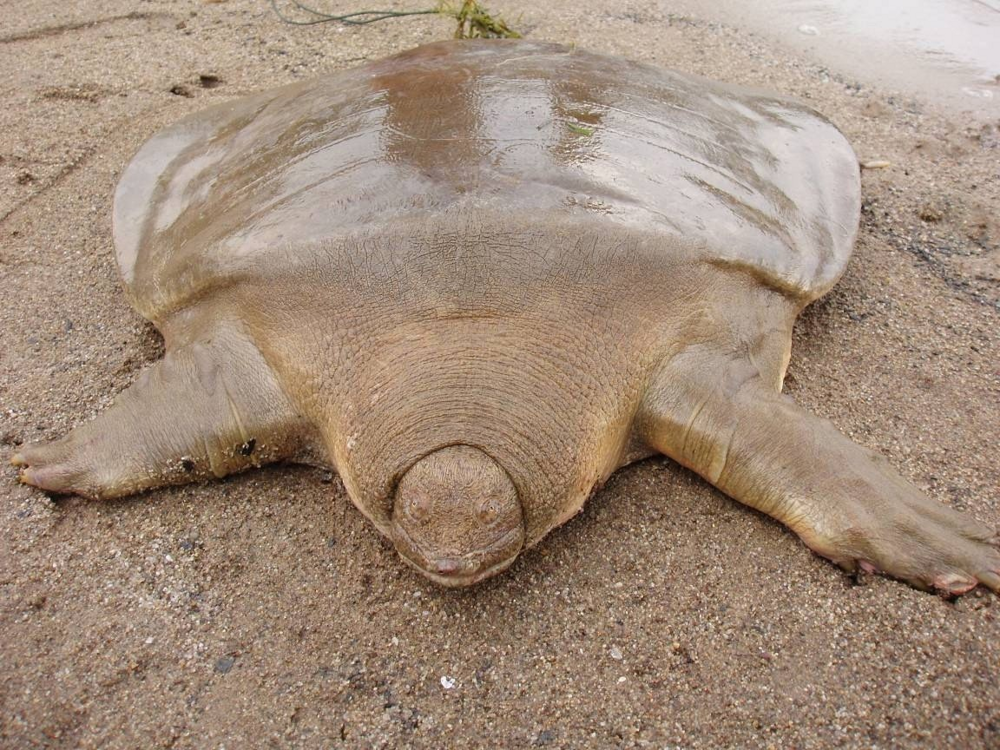
If you consider yourself an introvert, then look at the soft shell turtle and think again. 95% of their lives, these reptiles... simply lie at the bottom of the reservoir, buried up to their eyes in the substrate. There is definitely room for improvement for all human couch potatoes!
At the same time, the reptile itself is so interesting that you really want to look at it. Giant Asian softshell turtles are quite impressive representatives of the three-clawed turtles. These animals have a lot of funny things, but let’s start with perhaps the most noticeable one. They're leather! Instead of the usual armored turtle shell - a carapace, these animals simply have a bald skin! And this is not some separate Fukushima version of Donatello: soft-bodied turtles appeared in the Cretaceous period, when placental mammals were just beginning to divide into vegans and meat-eaters. 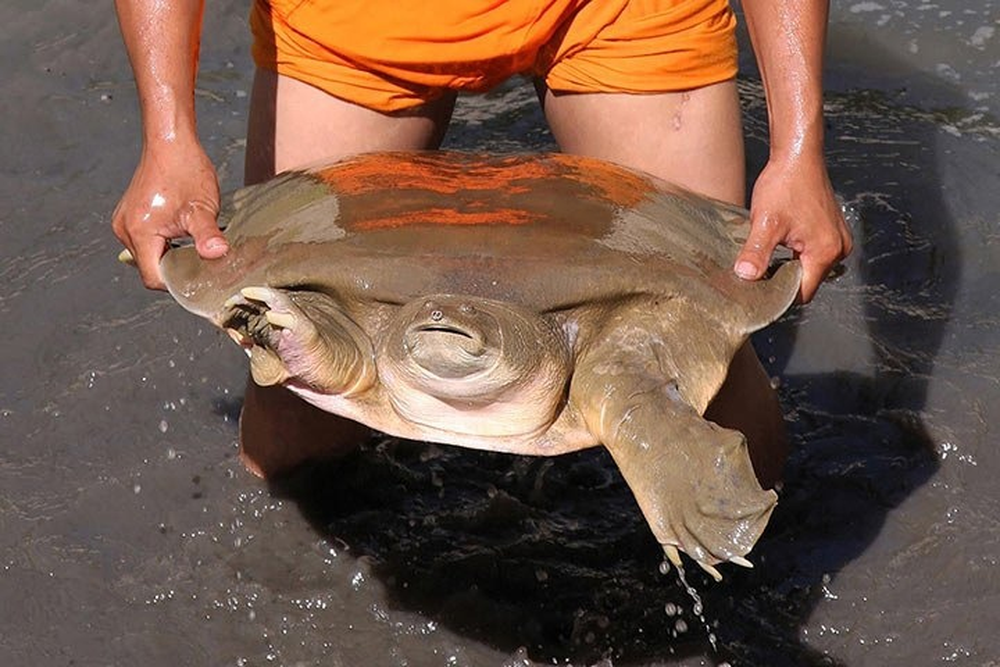
The very first fossil remains of the three-clawed family were found in Asia. Then, according to the geological record, the animals settled throughout North and South America, Australia and Europe. But, as they say, where you were born, you came in handy, so today our heroes can only be found in South and Southeast Asia. And yes, throughout all this time, from the Cretaceous to the present day, turtles were like this leathery! 
And all because throwing off heavy armor was their secret survival technique. Thanks to this, the reptiles have become much more agile. Yes, in the center and along the edges of the back, these turtles still have ossified areas of body armor, but they are covered with skin and do not grow together, but are connected by cartilage. You won’t be able to pull yourself in and hide in this, but wearing the structure itself is much easier! Especially considering the size of the reptiles: on average, the length of soft-bodies reaches a meter and their weight is 100 kilograms! Well, where else would they carry a heavy shell? 
On land, this turtle looks like an indiscriminate biomass.
If this is not enough, then here are a couple more reasons for you to part with your shell: diet and lifestyle. The fact is that Asian soft-bodied animals are successful predators. They attack crustaceans, fish and mollusks: one lightning-fast lunge and a crunch! - all the bones of the prey are broken. Despite all their softness, the animals’ jaws are very strong, so we warn you right away: do not feed them by hand! 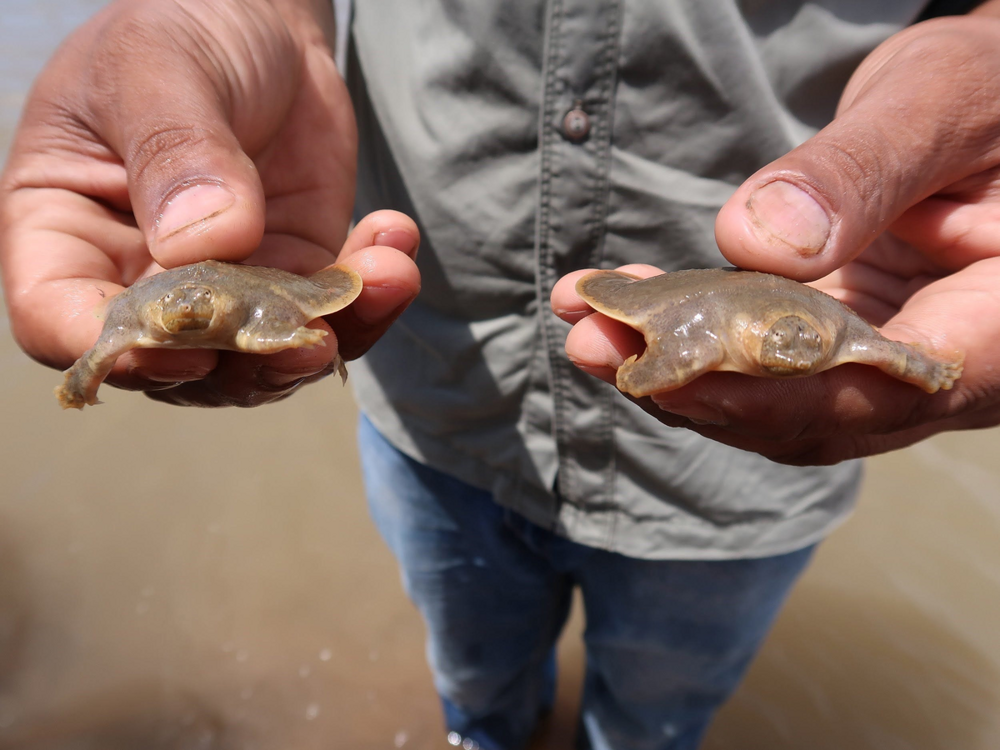
Surprisingly, the previous paragraph does not contradict the beginning of the article. Yes, the turtle is an effective predator. But she does not chase prey, but waits for it, hiding in the silt and vegetation. If food floats nearby - great. No? Well, what can you do, I'm on a diet today. The turtles come up to breathe twice a day, and the rest of the time they receive oxygen through pharyngeal breathing. It works almost like the gills of a fish, but it looks like some weird New Year's meat tinsel in the throat. The villi are equipped with a bunch of blood vessels and can absorb oxygen directly from the water. Therefore, the turtle receives life-giving oxygen by simply opening its mouth. 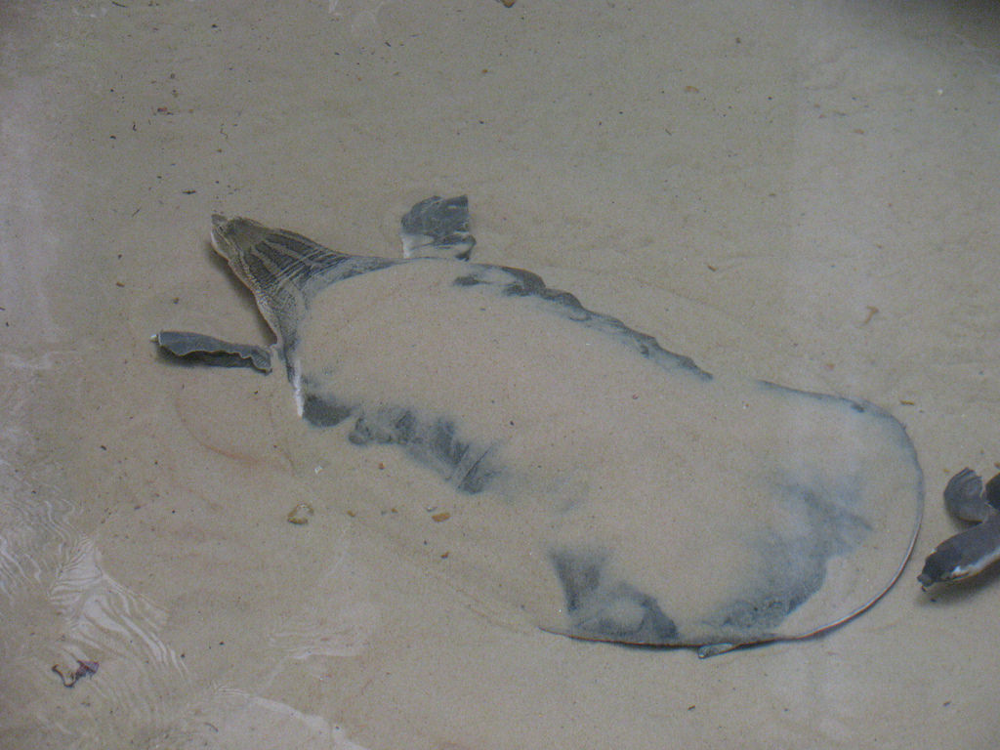
The surge in activity of our heroes occurs in February-March. Yes, it's easy to guess, it's breeding season! The females crawl ashore, look for a one-time relationship, dig a hole, lay 20-28 eggs and crawl back to their cozy bottom. They say that ladies can make several clutches at once during the season, but this is not certain. The animals have been poorly studied, and we have not yet revealed all the nuances of mating behavior. Why, until 2003, this species of soft-bodied animals was generally considered extinct! 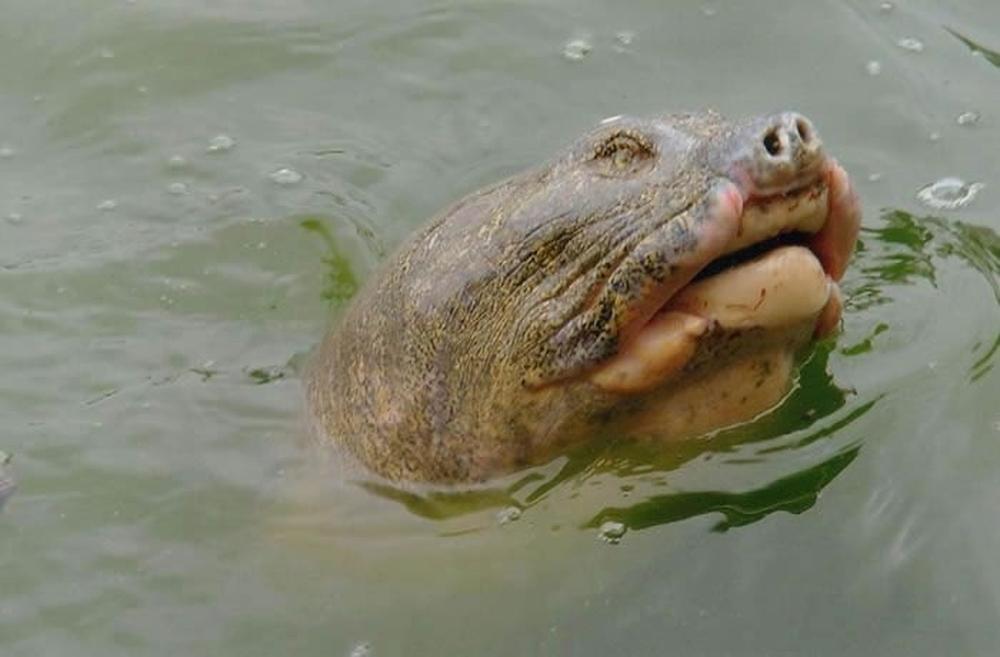
Scientists really thought that the world had lost our heroes forever, but no. In 2007, a completely viable population of Asian turtles was discovered on the banks of the Mekong. This discovery brought the turtles back to the world of the living, but their population is still in critical condition. Today there are very few soft-bodied animals left, and who knows when they will be declared extinct again - but now forever.
Add your comment
You might be interested in:

